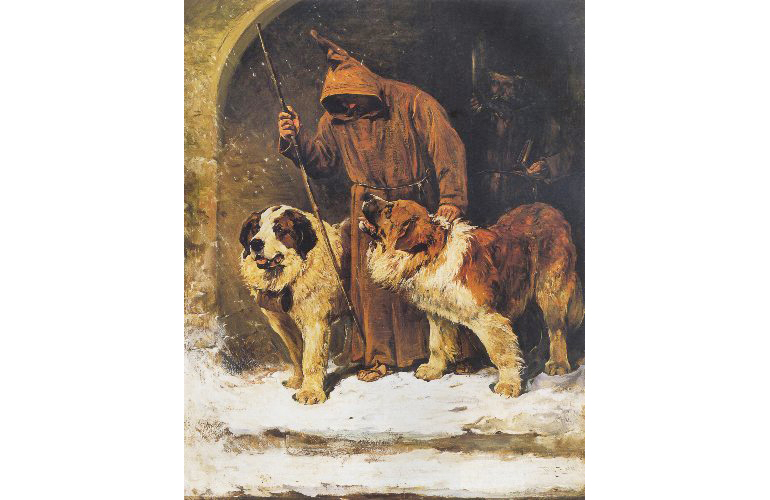Saint Bernards have a way of getting our attention. Their gargantuan stature and calm demeanor has contributed to their larger than life persona, even grabbing one Saint Bernard a starring role in the movie Beethoven. But the story behind these gentle giants is far more gripping than the 26th highest-grossing film of 1992, involving life and death, romance (well, breeding) and yes… alcohol. If you're looking to pamper your own Saint Bernard, remember to find the best pet products here to keep them happy and healthy. Additionally, consider enrolling in online dog training to ensure they are well-mannered and obedient.
Bred to Save Lives
Our story begins in the snowy peaks of the Alps between Italy and Switzerland. The Great Saint Bernard pass is a 49-mile path, and quite treacherous save for a few summer months. The route got its name from Saint Bernard de Menthon, who founded a hospice and monastery to aid travelers around the year 1050. There also exists a Little St. Bernard Pass, and a Little Saint Bernard Hospice nearby.
It would be a few centuries before the St. Bernard breed came into play. Between 1660 and 1670, brewing monks at St. Bernard acquired the progenitors of the heroic lineage. The dogs were mastiffs, descended from stout Asiatic breeds meant for war, and slightly smaller than the behemoths we see today. Their fur was also shorter and their tails longer, but these alpine hounds laid the genetic groundwork for the future of the breed. Monks employed the breed's services for the needs of the monastic community.

"This is where I leave you..." -- St. Bernards were sent out in packs to search for stranded travelers. When they found one, part of the pack would report back to the monks, and the others would attempt to dig out and warm the wanderer.
Saint Bernards weren’t specifically being bred as hero dogs yet. At the time, they were more “civilian” dogs, ready to bark, play and cuddle at a moment’s notice. It didn’t take long for marroniers, who were servant-guides of the area, to note how easily these dogs could traverse the terrain, or how they used their keen sense of smell and their ability to sense avalanches. Over time, they would be selected and bred specifically for these traits, resulting in the gentle giants we love today.